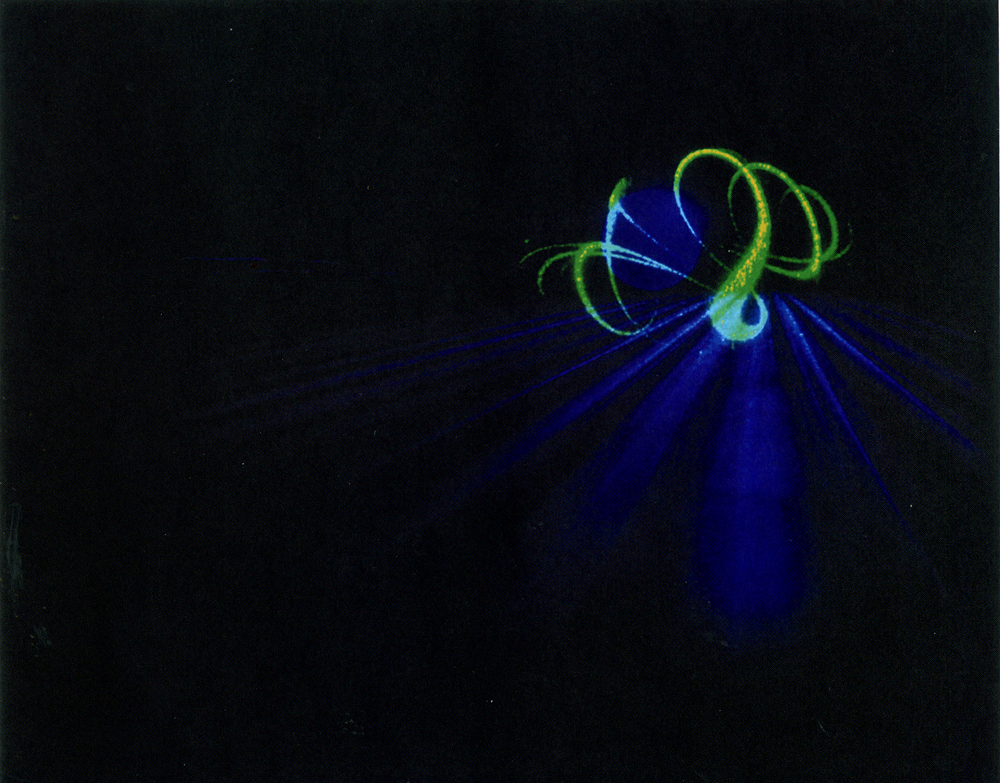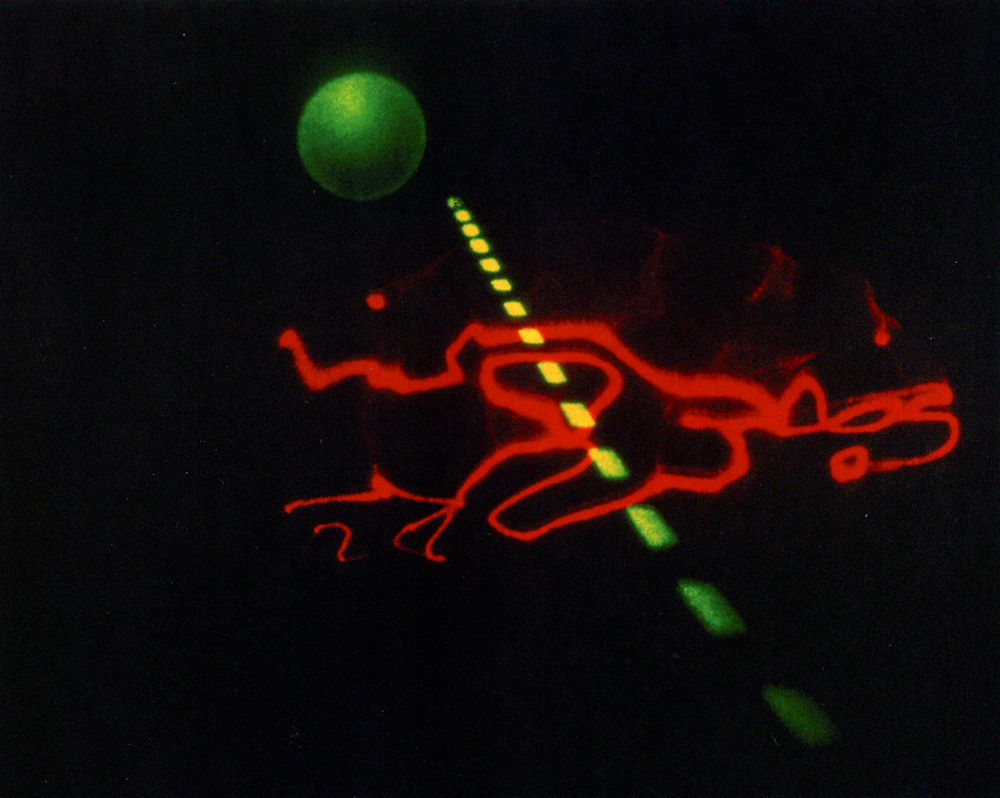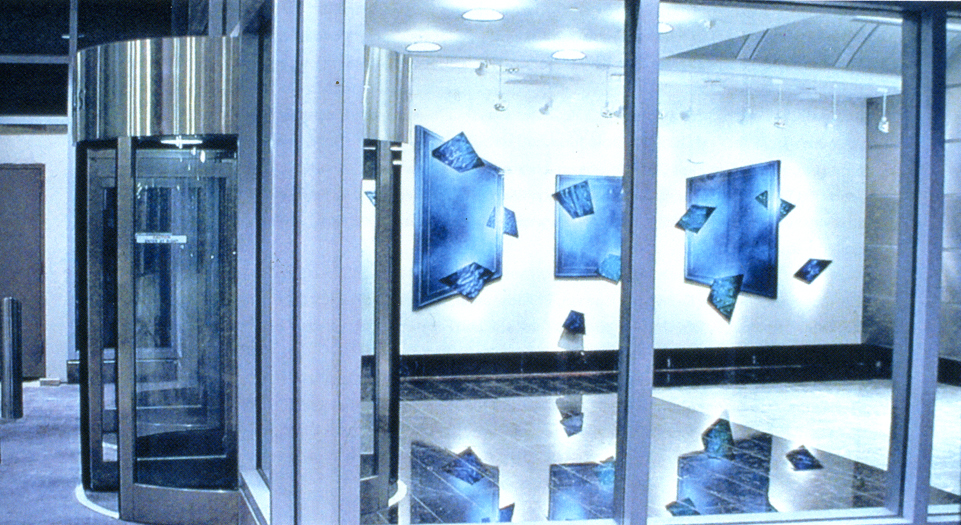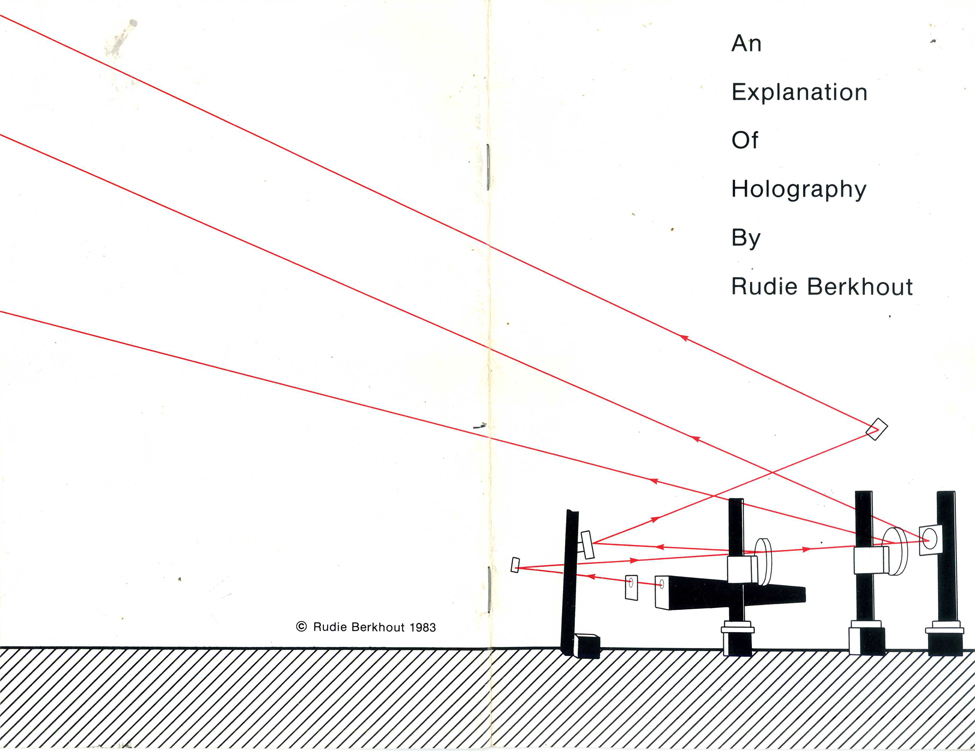
An early draft, 12/8/23
RUDIE BERKHOUT
I first met Rudie Berkhout in the summer of 1981 when I parked my Suzuki GT550 at the Museum of Holography in NYC. I was waiting in Serge Honinow's van in case it needed to be driven around the block while he was unloading some sleeves he and his family in new Jersey sewed overnight at a factory in NY's Garment District. When he came back to the van he was accompanied by some cat who I thought might be another one of Serge's drunk punk friends, but Serge said, "Ed, I'd like you to meet Rudie Berkhout" and my mind was blown. I said, "Holy cow! Everybody's been telling me that I've got to meet you!" Rudie asked if we had the time to come up to his apartment around the corner and see some works, and hey, ho let's go find a legal parking spot and indulge!
We walked in to the pad he shared with Hudson Talbott, Rudie gave us something to smoke, and then flipped Phillip Glass's Einstein On the Beach on the turntable, and went around the room switching on the replay lights for the likes of Event Horizon, Future and the triptych, 12 mW Boogie, which I had only seen on the cover of Laser Focus Magazine. My mind was not only blown, but melted!
Looking at his work on-line is nothing like seeing them in real life. There is an incredible amount of Holo-Kineticism in them, with objects interacting with each, or some disappearing as the viewer moves, or morphing into a different object. So indulge in looking at these, and hope that you can see them in real life!
Here are as many images of Rudie's works as I could find in books and my own collection of slides that I had taken of his works in shows that I have seen. Rudie's own comments about his work, taken from the Leonardo article, SPIE and ISDH proceedings, and The Floating World catalog, are in quotation marks..

12 mW Boogie, 8" by 10" White Light Transmission Hologram, 1978.

"Also during 1978, I re-examined the image and color multiplication techniques that I had developed at Brown University in 1976. This time I began with one cube and two spheres, which were recorded in three master holograms. With the help of a Holographic Optical Element *HOE) that I designed especiall for this tack, I made many cubes and spheres from the orginal masters. The HOE I developed was basiclly a lens containing may focal points arranged in a three-dimensional grid through which I multipled the mastes. I recorded this as the 12 mW Boogie. This piece repersents the colored blocs that a chilc plays with when trying to build castles. The colors were varied and vibrant, and the trasition of cubes into spheres constituted my first animation."
Future Memories 8" by 10" White Light Transmission Hologram, 1979.
"The beauty of optics is materialized in a simple ring shape holding in its center several smaller rings."

"Future Memories was made from three masters. One was of a sphere, another of the field and lines, and the third an "inside-out" animation. This element was a revelation to me, the beauty of optics materialized in this simple ring shape that held in its center several smaller rings. By moving from side to side, the viewer perceives of the smaller rings as it expands to become the outside ring while the outside ring collapses into the center. I constructed this image by using a ring-shaped object, a large collimating lens full of aberrations, and several HOEs to repeat the sequence.
Event Horizon, 8" by 10" White Light Transmission Hologram, 1980. (2 views)
.
"A breakthrough occurred while I was working on this piece; I was able to draw with light for the first time."

"In Event Horizon I was able to generate an image element totally by optical means. This was a breakthrough for me; for the first time I was able to "draw" with light. I stretched, multiplied and curved the wavefront into an animated coil-like structure that I placed over a sphere (from a second master) in the final transfer. The third master used in this piece was of a forced-perspective field made of receding lines."
Transfer 137, 8" by 10" White Light Transmission Hologram, 1980. (2 views)
"I used a distortion medium to warp two lines to create the effect of a reflection on water."


"For Transfer 137, I used a distortion medium to warp two lines to create the illusion that they were being reflected from a water surface. A dotted line pointing straigth at the viewer and a sphere were captured in two other masters. The spherical object that I often use in my work provide a 'resting point', and the field or dotted line draws the viewer into the holographic space."
Kyoto, 12" by 16" White Light Transmission Hologram, 1980. Missing Image
In Kyoto, I placed two similar cloud-like animations on top of one another in the transfer to produce a color mixture. The color line-up was not criticial in this case and the overlapping provided three colors. Kyoto is also the product of the first 12 by 16 in. transfer plate I made and the first example of a piece created with the 2 by 20 in. master plates (instead of 1.5 by 10 in.) I now use to expand the viewing angle from side to side.
Kuan Yin, 12" by 16" White Light Transmission Hologram, 1981. Missing Image
Keeping the compositions simple is a difficult but important objective I set for myself, as is leaving enough space t invite vieweress to wander in and contemplate 'unfamiliar realms'. Kuan Yin and Ukiyo were completed in 1981 and clearly express my Zen-like approach of that year.
Vassarely Space, 12" by 16" White Light Transmission Hologram, 1981. Missing Image
"In Vassarely Space I played with the three-dimensional possiblilities of th optical effect that the artist Vassarely had used in a two-dimensional format.

Light Rain, University of Wisconsin at Madison, USA, 1992.


Odyssey 2001, Charlotte, North Carolina, USA

Click here for the Leonardo Article (Not yet)
Click here for a little book he self-published about how he works, called An Explanation of Holography.
